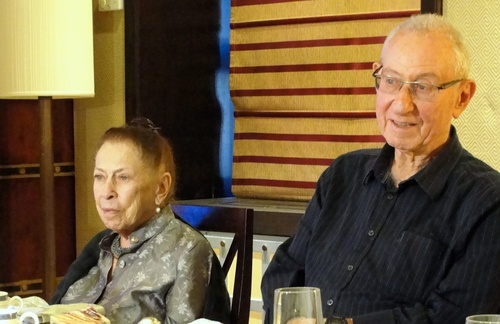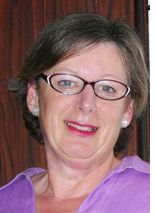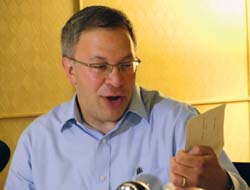
By Judy Lash Balint/JNS.org


JERUSALEM — Elad Peled, 87, has told the story of how he was injured during the battle for Tzfat (Safed) in Israel’s War of Independence many times. Now, for the first time, the retired Israel Defense Forces major general’s account of his days as Palmach commander will be readily accessible through a joint project of Toldot Yisrael (Chronicles of Israel) and Israel’s National Library.
For Peled and hundreds of others who played a pivotal role in the creation of the state of Israel, the Toldot Yisrael initiative provides peace of mind that their stories will not be forgotten.
Conceived seven years ago by Eric Halivni, an American immigrant to Israel with a background in Jewish education and non-profit management, Toldot Yisrael has been quietly working to do for Israel what Steven Spielberg’s Survivors of the Shoah Visual History project has done for Holocaust memory.
Halivni says he was astonished to learn after he made aliyah that there was no comprehensive archive to document the founding of the state. “There are some oral and written histories in places like the Palmach Museum, the Rabin Center, and Kibbutz Kfar Etzion,” he notes, “but no comprehensive project that makes all this incredible material easily accessible in one archive.”
To date, with funding from several prominent U.S foundations and private individuals, Toldot Yisrael has completed 1,000 interviews resulting in 3,000 hours of raw footage. “It’s not only about the War of Independence,” Halivni emphasizes. “We’re documenting people who were witnesses to history.”
One of Toldot Yisrael’s first interviews was with Zionist leader Arieh Handler. Until his death at age 95 in 2011, Handler was the last living witness to the Israeli Declaration of Independence on May 14, 1948. During his interview for the Toldot archives, Handler produced a hand-addressed invitation to the event in Tel Aviv.
Danny Streifler, Director of Digital Photo Archive and Interactive Services at The National Library of Israel, is excited at the prospect of bringing such gems to light. “The National Library was always very good at preserving material in the basement: now we want to provide the widest access, and the Toldot Yisrael collaboration is the perfect merge,” he says.
While many interviews are available on YouTube, what the National Library hopes to offer is the added value of links to existing archival material on events recounted by the participants.
Plans call for the Toldot Yisrael interviews and documentation to be used by scores of Israeli teachers who attend summer programs at the National Library to develop curriculum related to Israel’s history.
So far, material from Toldot Yisrael interviews has been used in the “Eyewitness 1948” series of documentary films that have aired on Israel’s History Channel and been viewed online more than 500,000 times, as well as in a series of two-minute films entitled “The Founders: The Story of the 1948 Generation,” which features kibbutzniks, new immigrants of the time, and members of the Lehi and Haganah who bring their different perspectives to that turbulent time.
For Elad Peled, the former Palmach (elite Haganah fighting force) commander, that’s one of the reasons for his enthusiasm for the Toldot Yisrael-National Library collaboration. “The same event can be viewed so many ways by different people,” he says. In order for history to be understood, various perspectives need to be taken into account, and that’s the strength of the huge number of interviews that will now be archived and available.
“I didn’t dance in the street after the November 29, 1947 U.N. vote. I was on guard at Kibbutz Ramot Naftali near the Lebanese border. I was 20-years old and wrote a letter to my mother, that I had a very heavy feeling, I knew we were entering war,” he recalls.
Peled, a former director general of Israel’s Ministry of Education, and his wife Zimra, who holds a Ph.D. from Columbia University, have been married for 66 years. Zimra was also a member of the Palmach who escorted convoys between Tel Aviv and Jerusalem during the siege of Jerusalem. The Peleds are acutely aware of the need to intensify efforts to digitally record the testimonies of the shrinking ranks of eyewitnesses to Israel’s founding and surviving military veterans of the 1948 War.
“This afternoon we’re going to another funeral of one of our Palmach chevra (group of friends),” Peled tells reporters. “We are disappearing every week.”
*
Balint is based in Jerusalem. Her article provided by JNS.org, which is sponsored on the pages of San Diego Jewish World through the generosity of Dr. Bob and Mao Shillman